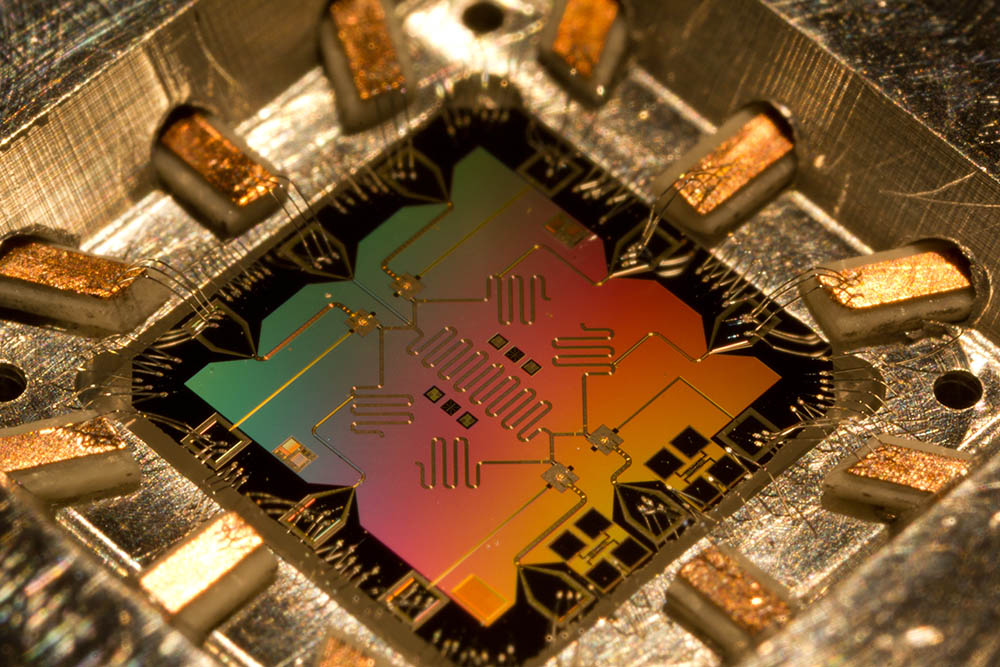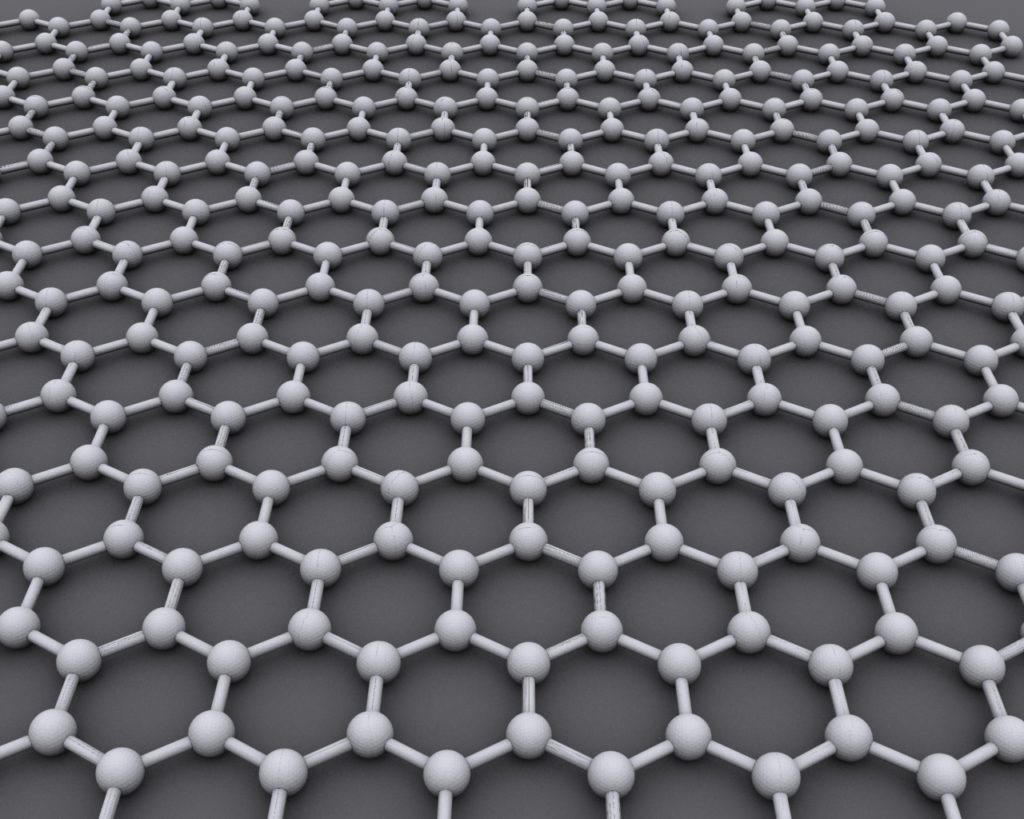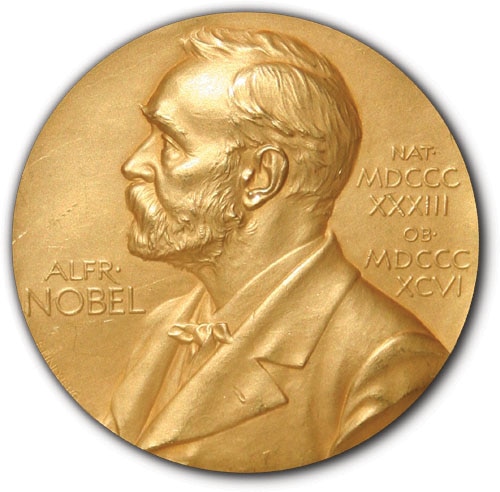Rare properties, to say the least
Graphene, an exotic form of carbon, has excited scientists since its 2003 discovery. It’s the most hyped material in the world. Why? It’s 200 times stronger than steel while still being flexible, stretchable, transparent, can be made magnetic, conducts electricity and heat, as well as having the ability to be submerged in liquids without oxidizing (unlike other conductive materials). It would take an elephant, balanced on a pencil, to break through a sheet of graphene the thickness of plastic wrap. A cubic inch of the material could balance on one blade of grass and a single ounce of graphene could cover 28 football fields. You sort of get it by now, right?
All of these properties together are extremely rare to find in one material.
At the atomic level, graphene resembles a chicken wire lattice of carbon molecules that is so fine that not even a hydrogen molecule can pass through it. Isolating and characterizing graphene was momentous enough to earn the 2010 Nobel Prize in physics for groundbreaking experiments. Thank you, Andre Geim and Konstantin Novoselov.
The antenna printed right onto her skirt
Researchers at the University of Manchester have figured out a way to make cheap antennas using graphene. They found they could improve graphene’s electrical properties by flattening it from a heap of flakes to a thinner sheet, just one-atom thick. The researchers print antennas on paper and other materials with a process that could bring network links to millions of small and cheap devices.

Supercharged quantum computers
The future of technology could hinge on this single material. If you think of something in today’s electronics industry, it can most likely be made better, smaller and cheaper with graphene. This material could revolutionize everything – yes, everything – from jet planes to solar panels.
Fans of the material hope it can be used as a component in computer chips that could help sustain the pace of Moore’s Law, improving at exponential rates, toward smaller and more powerful processors.
Think back to the difference between your smart phone and the bulky mainframe system of just a few generations ago. Now think ahead to what that will come after your phone and you’re talking about a computer that operates on an atomic scale, otherwise known as a quantum computer.

Conventional computers rely upon codes expressed as binary digits, or bits, with a value of either 0 or 1. A computer with a two-bit register therefore has a total of four (2 to the second power) different states: 00, 01, 10 or 11. A quantum computer, however, isn’t limited to just two values in each bit. Each quantum bit, or qubit, can exist as a 0, a 1, or both a 0 and a 1 simultaneously, a state known as “superposition.” Quantum computers achieve this tremendous feat by taking advantage of the strange nuances of quantum mechanics, the physics theory that describes a weird, microscopic world (the nature and behavior of energy and matter on the atomic and subatomic level) in which a particle can exist in two different places at once or spin in opposite directions at the same time. Graphene is a fault tolerant material that can help reduce the fragility of quantum computing systems.
An international team of researchers based at MIT has figured out how to make the edges of the two-dimensional wonder material graphene behave like one-dimensional electronic wires. The edges don’t have to be perfectly formed. The electrons would still go zipping along in the right direction. In terms of quantum computers, that’s an important advantage.
The revolution is coming
Graphene can change the electronics industry, ushering in flexible devices, electronic clothing and computers that can interface with cells in your body. In other words, you could have a graphene gadget implanted in you that could read your nervous system or talk to your cells. Graphene could be used for everything from pressure sensors in car tires to RFID – radio-frequency identification tags pasted to products so stores can track their inventory. Those tags today usually use aluminum and copper antennas, both relatively expensive metals. Graphene-based RFID tags can significantly reduce the cost thanks to a much simpler process and lower material cost. And the super capacitor/biodegradable battery is under development. Charge your electric vehicle in one minute and be ready to go, anyone?
The pencil is mightier than the sword
For a decade, what has seemed like science fiction is now reality. Graphene is the first-ever man made material in two dimensions. And potentially the most important discovery of the century. Along with universities, Samsung, Nokia, SanDisk and IBM are heavily investing in graphene. And the real kicker? Graphene is inexpensive so it’s merely a question of when the gold rush begins.
“Graphene ink is very cheap,” said Zhirun Hu, one of the researchers at University of Manchester. “The process to make graphene laminate with high conductivity is very simple and aimed for mass production.”
Who would have thought that the stuff we have in pencil lead could lead to this?

P.S. Carbyne, like graphene, is just one atom thick, has beat out graphene as the world’s strongest material. D.S.

























